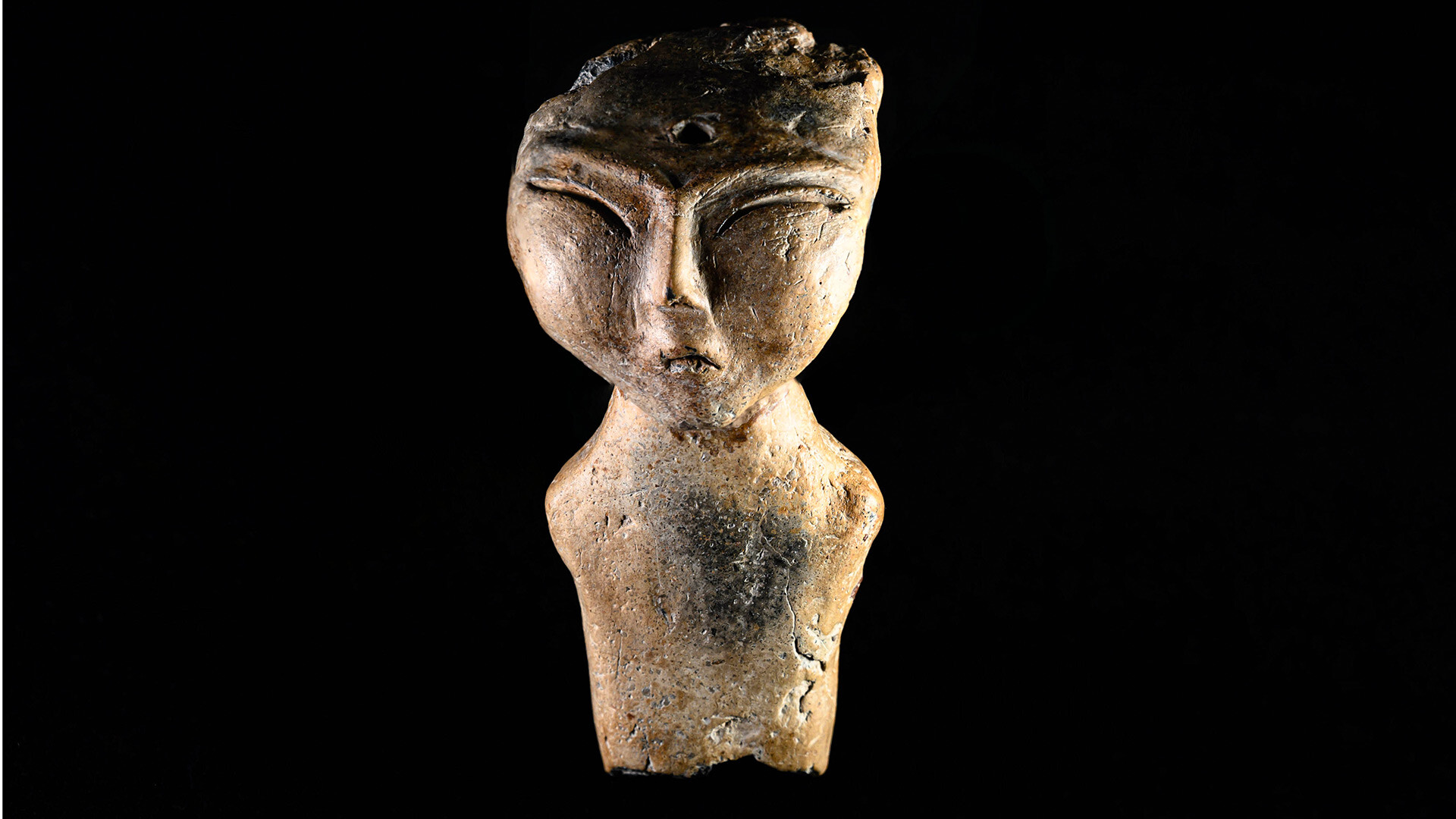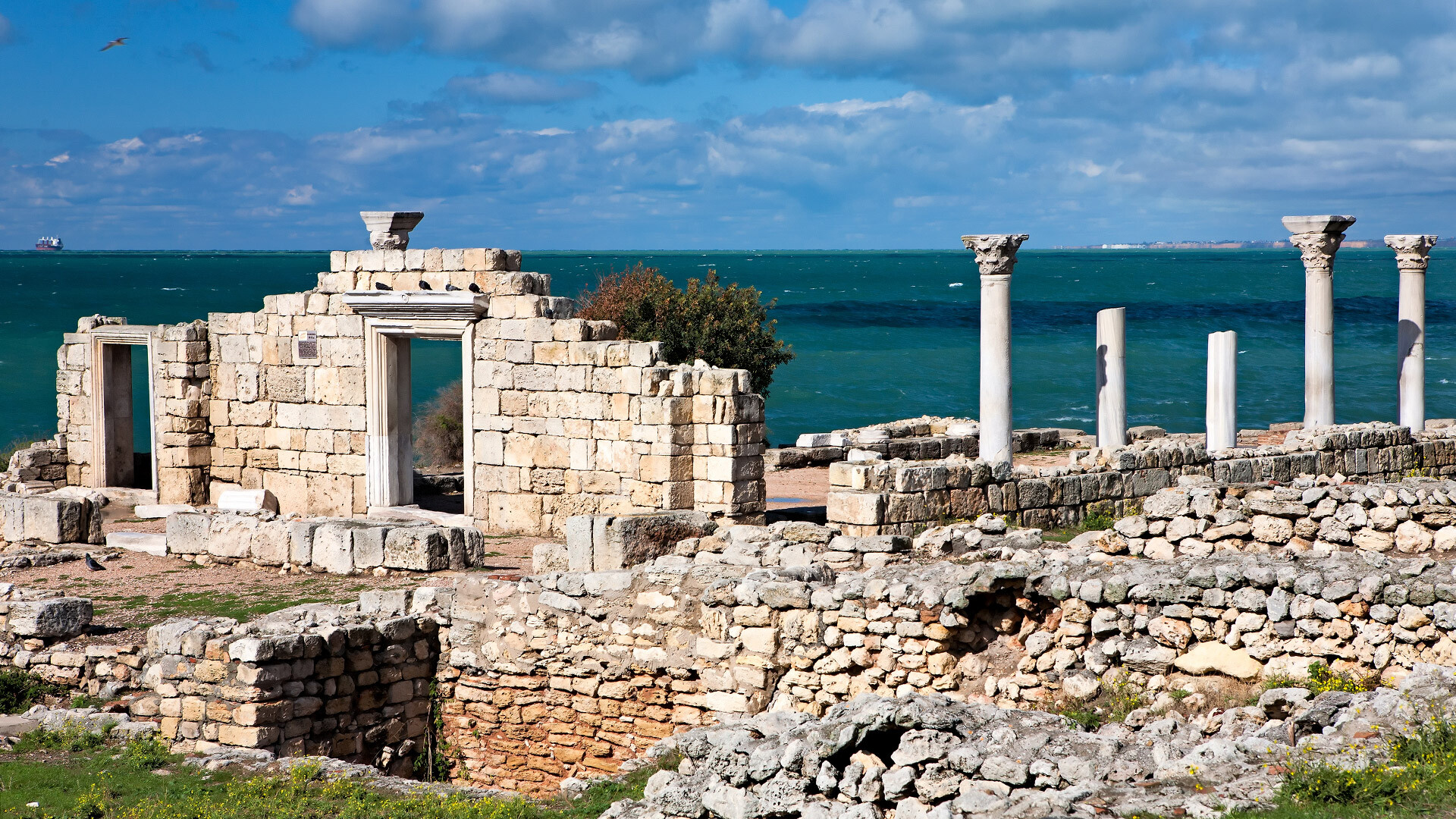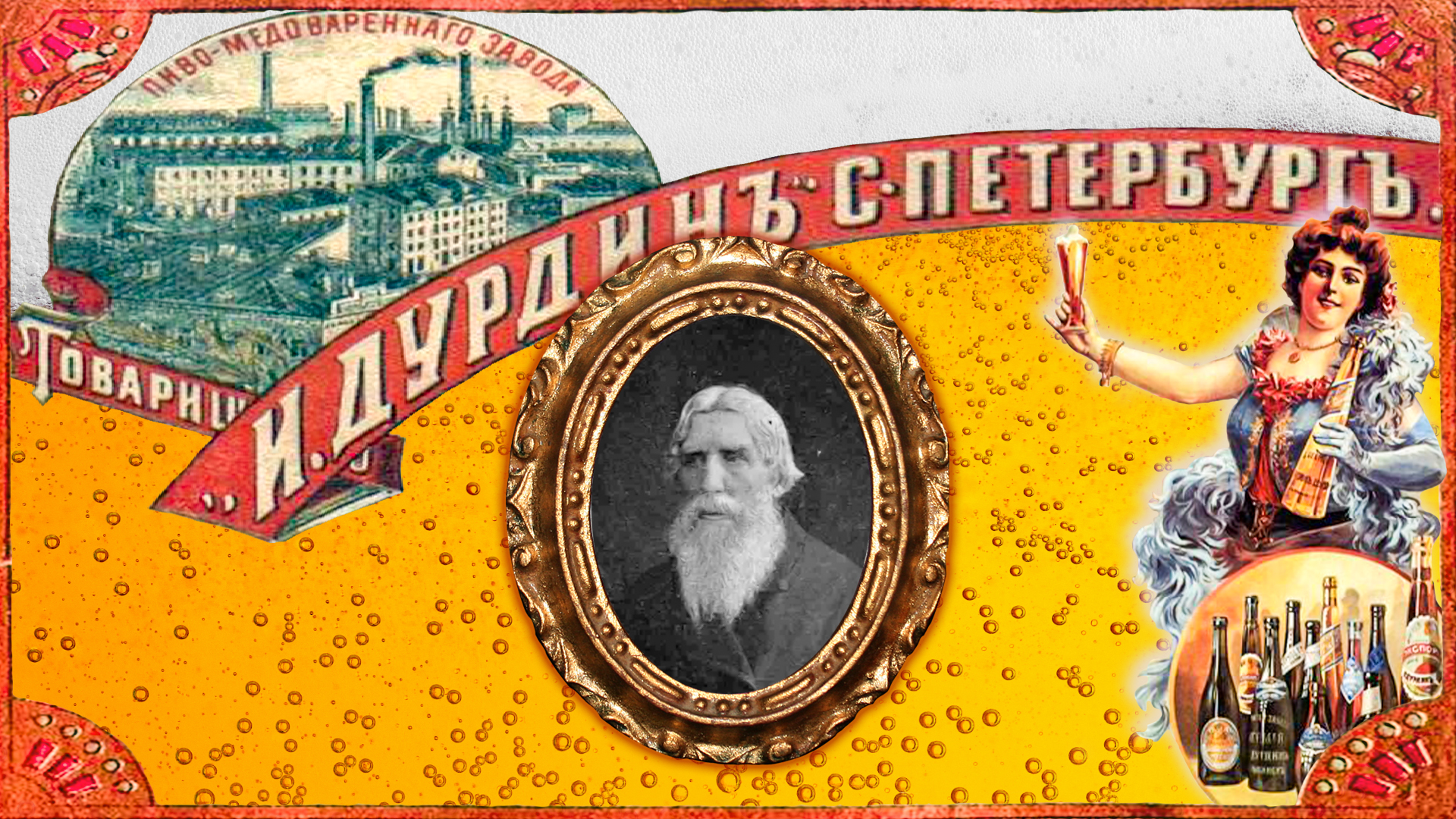
Have you ever seen a 5,000-year-old BEER straw before?
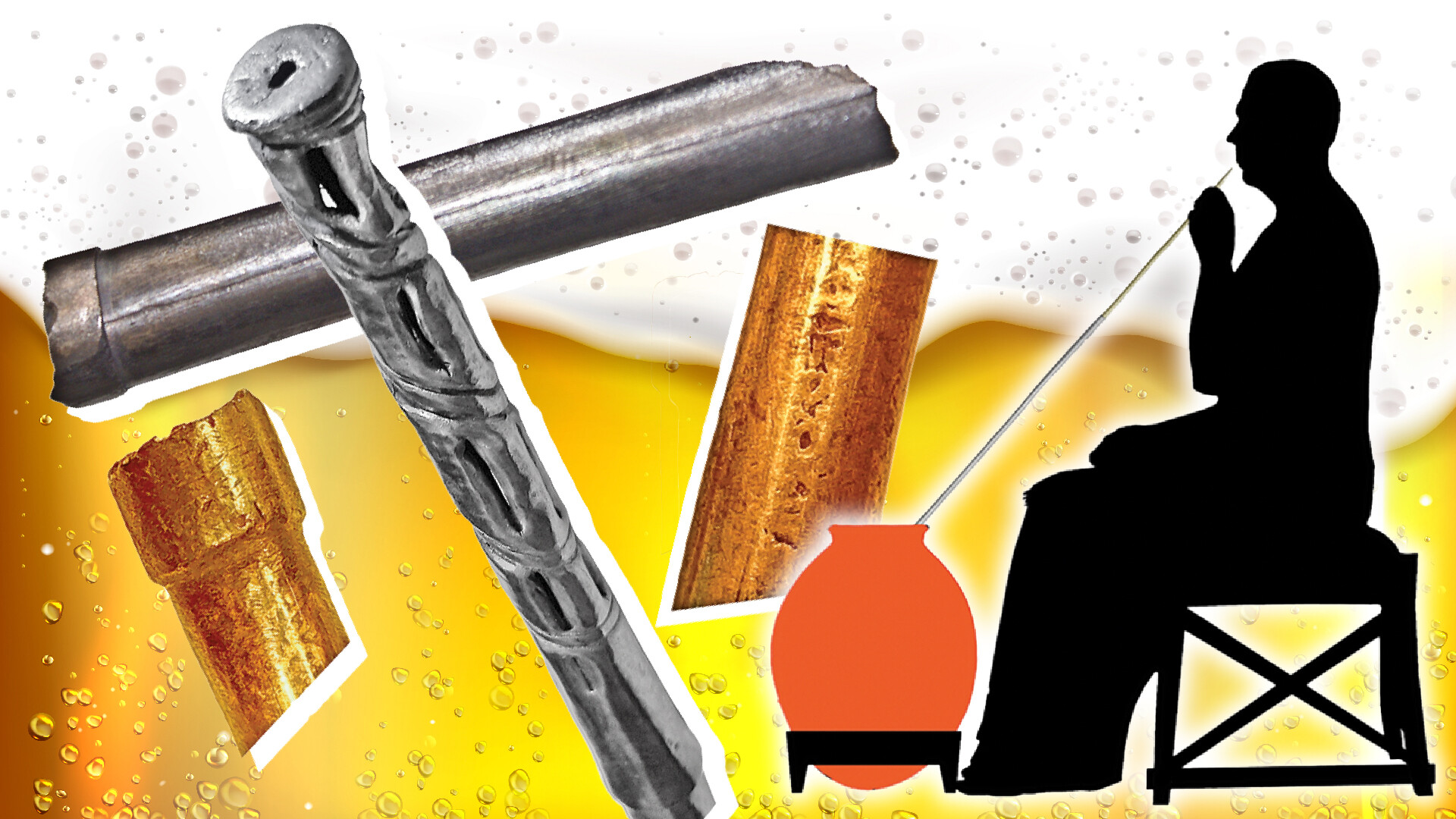
The Hermitage Museum keeps ancient artifacts from ‘Maikop kurgan’ in the Republic of Adygea in Russia’s south – a burial place from about 35 century B.C. Archaeologists discovered it back in 1897, finding hundreds of priceless items inside. Although, the purpose of some of them was unclear at the time.
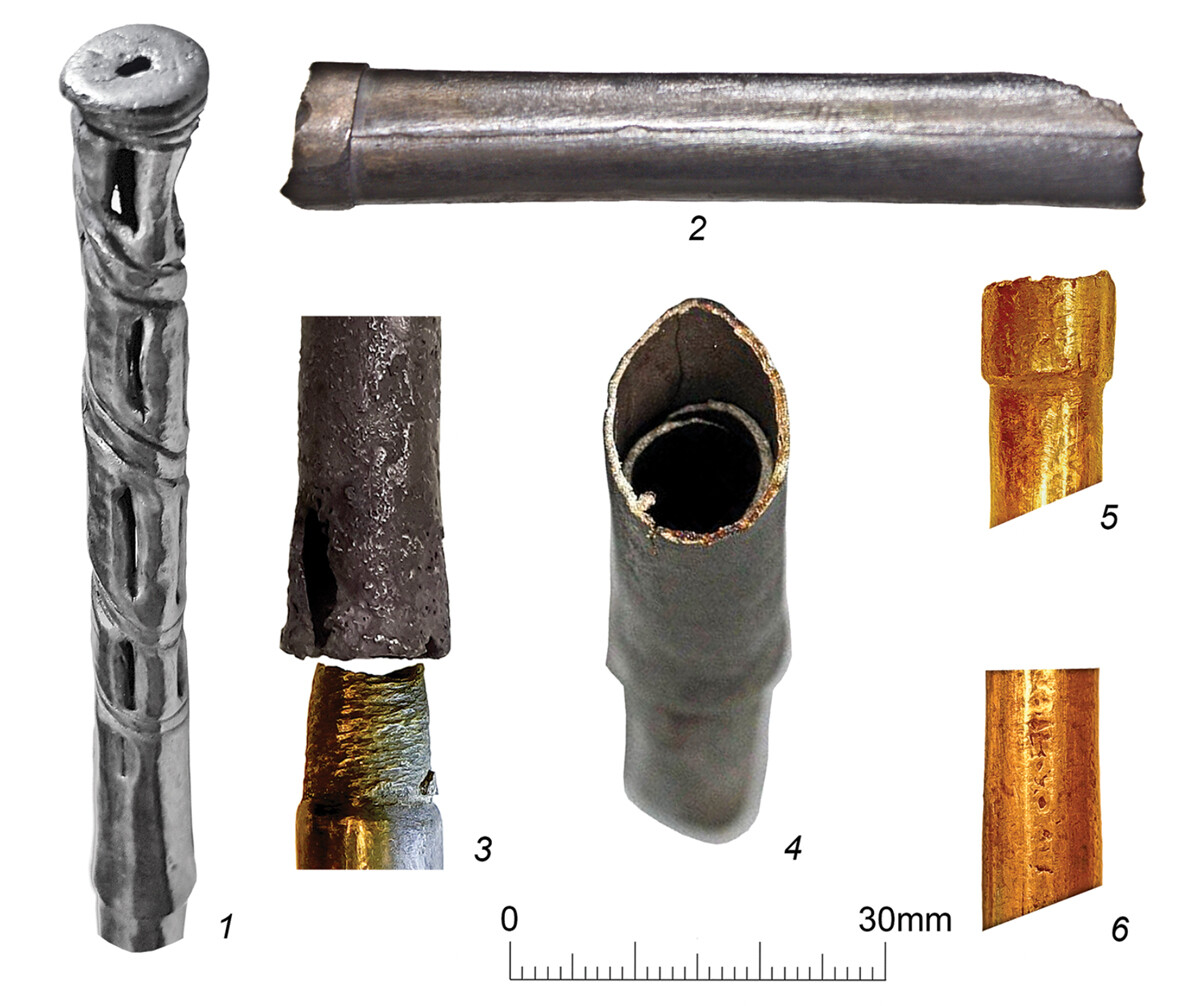 he design of the ‘sceptre’ components from the Maikop kurgan: 1) one of eight silver perforated tips; 2) joint between two segments of the silver tube, and longitudinal seam; 3–5) types of fittings; 6) probable soldered longitudinal
he design of the ‘sceptre’ components from the Maikop kurgan: 1) one of eight silver perforated tips; 2) joint between two segments of the silver tube, and longitudinal seam; 3–5) types of fittings; 6) probable soldered longitudinal
Eight tubes made of gold and silver raised the most of the questions. Each of them was of a length of slightly more than a meter (composed of segments inserted into each other) and a diameter of about 1 centimeter. Four of them had bull figurines on them. Scientists concluded that they were poles from a burial canopy.
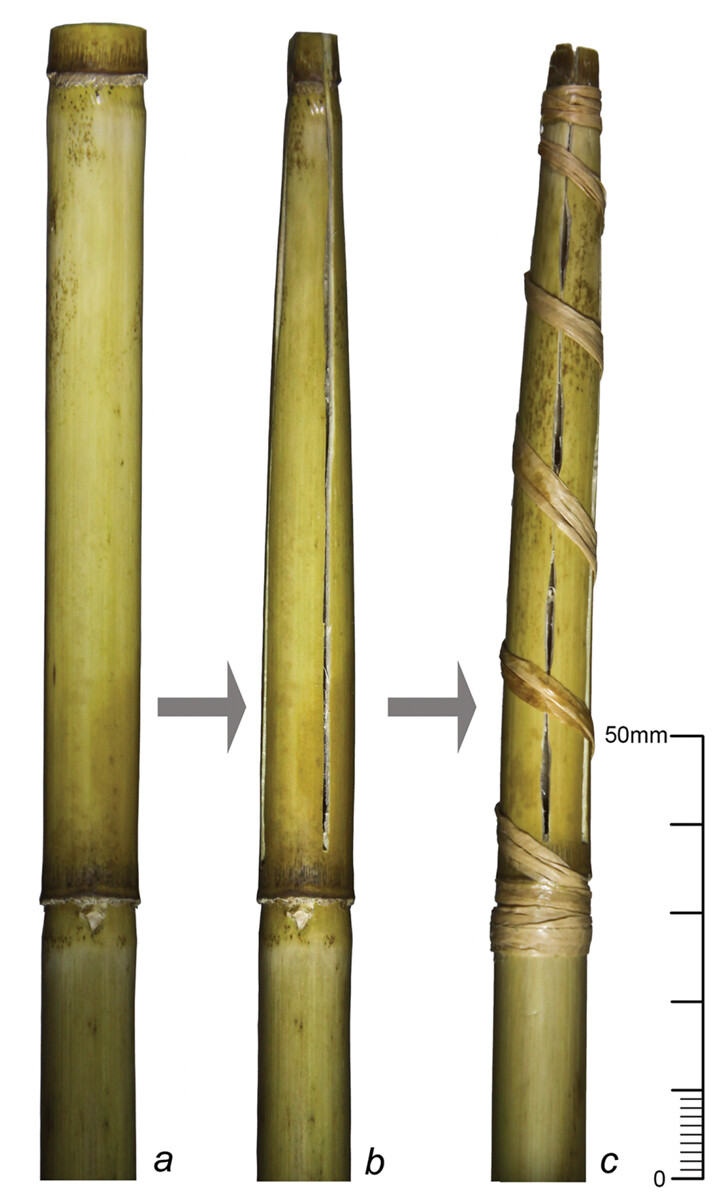 The chaîne opératoire of an experimental tip strainer made from common reed (Phragmites australis)
The chaîne opératoire of an experimental tip strainer made from common reed (Phragmites australis)
However, new research, published in 2022, allowed for a completely astonishing theory: these tubes were used as straws for collective beer drinking. Inside of the straws, scientists discovered traces of barley starch.
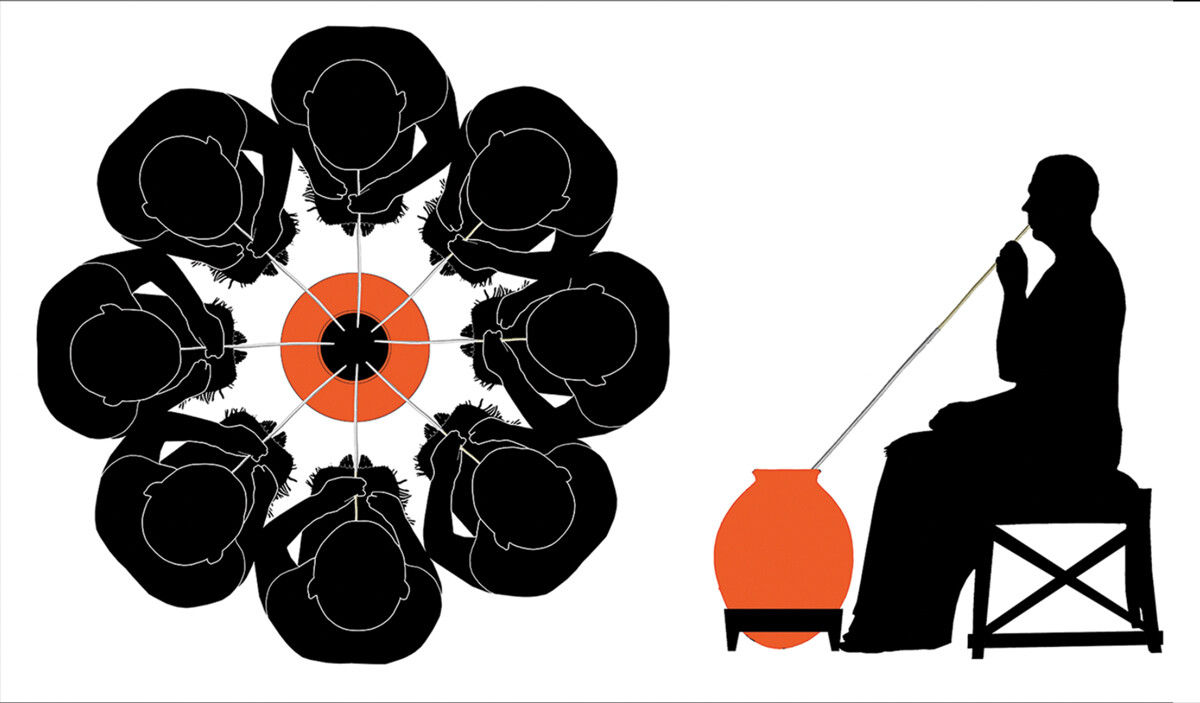 Reconstructed use of the drinking tubes from the Maikop kurgan
Reconstructed use of the drinking tubes from the Maikop kurgan
The ends of these straws had perforations, like a filter, which also led scientists to the thought that they were used for drinks with residues. Similar straws were widespread among Sumerians and Ancient Egyptians.
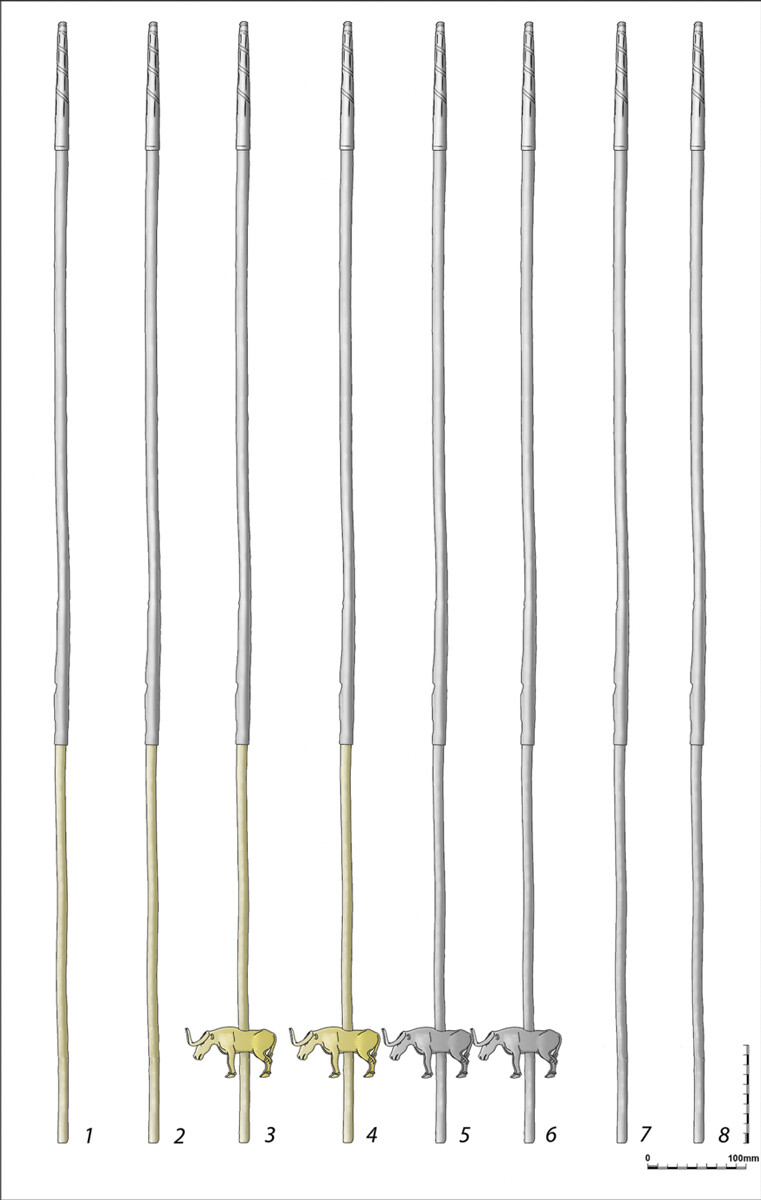 Schematic drawing of the set of ‘sceptres’ from the Maikop kurgan: 1–2) gold and silver tubes; 3–4) gold and silver tubes with gold bull figurines; 5–6) silver tubes with silver bull figurines; 7–8) silver tubes.
Schematic drawing of the set of ‘sceptres’ from the Maikop kurgan: 1–2) gold and silver tubes; 3–4) gold and silver tubes with gold bull figurines; 5–6) silver tubes with silver bull figurines; 7–8) silver tubes.









